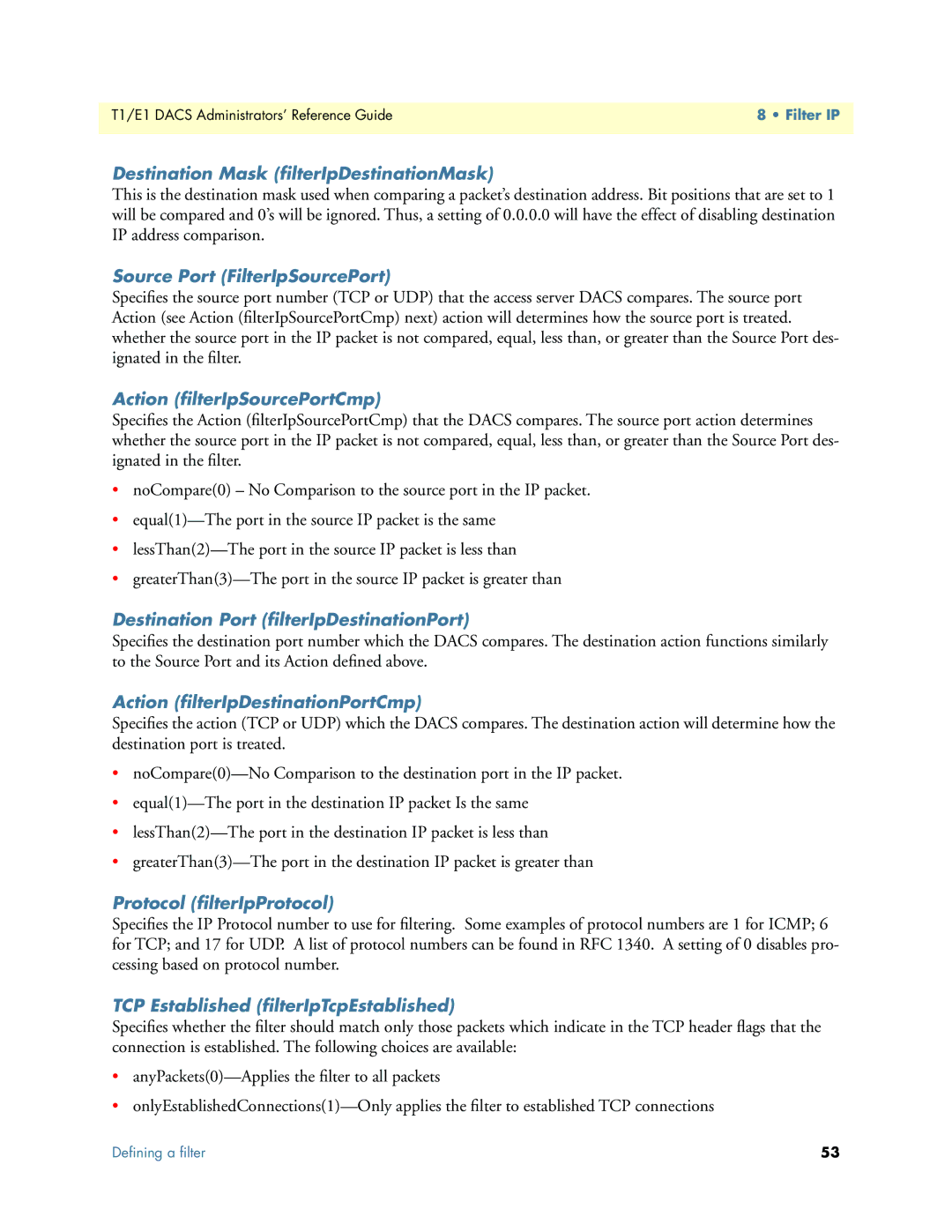T1/E1 DACS Administrators’ Reference Guide | 8 • Filter IP |
|
|
Destination Mask (filterIpDestinationMask)
This is the destination mask used when comparing a packet’s destination address. Bit positions that are set to 1 will be compared and 0’s will be ignored. Thus, a setting of 0.0.0.0 will have the effect of disabling destination IP address comparison.
Source Port (FilterIpSourcePort)
Specifies the source port number (TCP or UDP) that the access server DACS compares. The source port Action (see Action (filterIpSourcePortCmp) next) action will determines how the source port is treated. whether the source port in the IP packet is not compared, equal, less than, or greater than the Source Port des- ignated in the filter.
Action (filterIpSourcePortCmp)
Specifies the Action (filterIpSourcePortCmp) that the DACS compares. The source port action determines whether the source port in the IP packet is not compared, equal, less than, or greater than the Source Port des- ignated in the filter.
•noCompare(0) – No Comparison to the source port in the IP packet.
•
•
•
Destination Port (filterIpDestinationPort)
Specifies the destination port number which the DACS compares. The destination action functions similarly to the Source Port and its Action defined above.
Action (filterIpDestinationPortCmp)
Specifies the action (TCP or UDP) which the DACS compares. The destination action will determine how the destination port is treated.
•
•
•
•
Protocol (filterIpProtocol)
Specifies the IP Protocol number to use for filtering. Some examples of protocol numbers are 1 for ICMP; 6 for TCP; and 17 for UDP. A list of protocol numbers can be found in RFC 1340. A setting of 0 disables pro- cessing based on protocol number.
TCP Established (filterIpTcpEstablished)
Specifies whether the filter should match only those packets which indicate in the TCP header flags that the connection is established. The following choices are available:
•
•
Defining a filter | 53 |
